Contents
Tarragon, also known as tarragon, is a perennial essential oil herb belonging to the genus Wormwood. Unlike other representatives of this species, the plant is completely non-bitter, but on the contrary, it has a fresh spicy taste and delicate aroma. Many housewives use it in cooking and canning, and folk healers use the medicinal properties of the herb to purify the blood, restore appetite, and with beriberi. Growing this spicy crop is possible in any locality and climatic conditions, since the plant is quite unpretentious, and it needs the most minimal care.
Landing
Tarragon easily takes root in our latitudes, but like any culture, it has certain preferences. To grow a good fragrant herb, you need to consider the following points: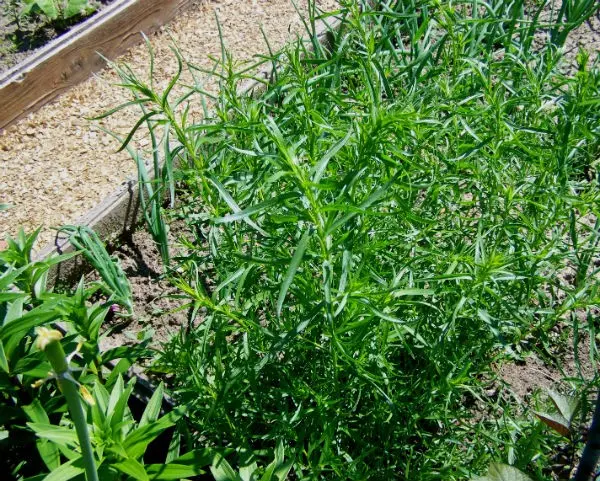
- the areas where spices are planned to be planted should be well lit by the sun – the growth of greenery and the intensity of the aroma depend on this, however, the culture is quite capable of developing in the shade, but in this case the taste and aroma of the greenery will be less pronounced;
- tarragon prefers light and fertile soils with good drainage properties, and grows best in sandy loamy soil – if the soil is heavy, it needs to be diluted with sand, peat;
- the culture does not tolerate acidic soil – you can bring the soil to normal acidity by adding chalk, lime, oven ash or dolomite flour;
- lush and fragrant grass is easier to grow on fertile soil rich in mineral salts and organic matter – manure, humus, and superphosphate are introduced into the soil during the autumn digging of the beds;
- the plant does not tolerate excessive soil moisture – when choosing a place for planting spices, one should abandon low-lying areas, and give preference to a bed on a hill;
- when sowing and transplanting tarragon, the distance between rows (holes) should be at least 30 cm, since some plant species have a fairly developed deciduous part and can grow to a height of 1,5 m;
- tarragon is a perennial crop, but due to the fact that its cultivation takes place in one place for many years in a row, the greens become coarse and lose their taste, so the beds with spices must be updated every 5-7 years;
Planting spices can be carried out both from seedlings and from sowing seeds directly in open ground. Growing through seedlings is preferable, since this method allows you to plant already grown plants in the garden, and thereby speed up the harvest. To sow tarragon for seedlings, it is necessary to prepare a container and soil. The best for seedlings is considered a soil mixture consisting of equal parts of turf, humus and sand.
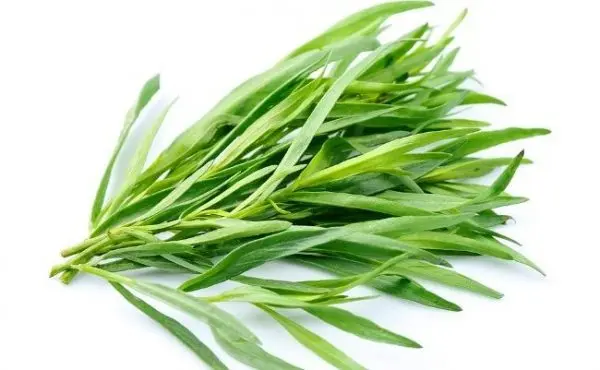
Sowing seeds is carried out in moist soil in mid-March. The planting material is evenly distributed over the surface and embedded to a depth of no more than 0,5 cm. To grow strong and healthy seedlings, it is necessary to constantly maintain the correct temperature. From the moment of sowing until the appearance of sprouts, it should be 22-24 ° C, then the degree should be reduced to 17-20 ° C.
With the right temperature regime, the first shoots appear in 2-3 weeks. Subsequent care of seedlings consists in timely watering (the soil should be moderately moist), light loosening, periodic hardening of plants and picking when 3-4 leaves appear.
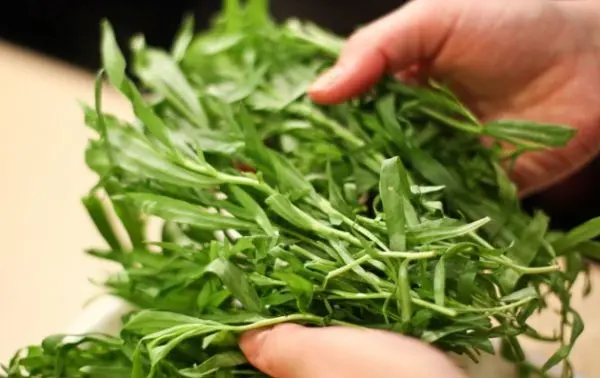
Planting seedlings in the garden is carried out at the end of May, when the threat of night frosts has passed. The area where the spice will be grown must be prepared in the fall: dig the soil, clear it of stones and weeds, fertilize with humus at the rate of 4 kg / sq. m, as well as add potassium salt 20 g / sq. m and superphosphate 40 g, respectively. It is possible to sow seeds directly into the ground not earlier than the last decade of May.
Video “Properties of tarragon”
Informative video with all the necessary information about the plant, as well as its beneficial properties.
Reproduction
Tarragon can be propagated in several ways: by sowing seeds, cuttings, dividing the bush and rhizome. Growing from seeds is the easiest, but not the most successful way in terms of grass quality. The fact is that planting tarragon from its own seeds over time leads to the degeneration of the culture – a decrease in the concentration of esters, and, consequently, a decrease in the intensity of the aroma. For this reason, experienced gardeners try to propagate tarragon vegetatively: from a cutting, or by dividing a bush.
The division of the bush allows you to save the varietal characteristics of the crop, but at the same time the plant experiences a certain stress, since individual parts from an already formed bush take root for a long time. You need to divide and plant a bush in spring or early autumn. The plant should be carefully dug up, divided into two parts (no longer desirable), then each of them should be placed for some time in a solution that stimulates growth, after which the roots can be dug in pre-prepared holes and watered abundantly.
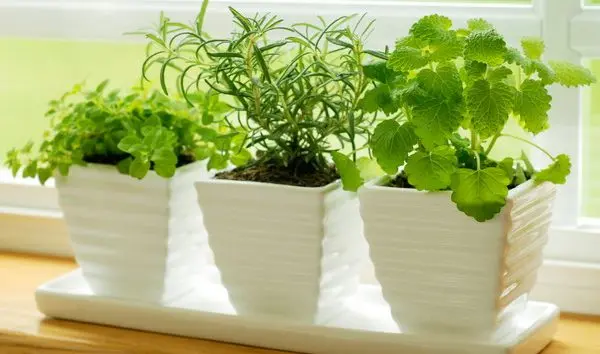
Growing tarragon from cuttings is quite simple. Planting the cuttings in the ground is carried out in early May, and the sprigs for germination must be cut a few days before the expected date of planting. Cuttings 10-15 cm long should be placed for a day in a solution of “Kornevin” (a biostimulant that accelerates root formation), or another growth stimulator, then dug into wet sand and covered with a film.
It is necessary to ensure that the sand is always slightly damp, but not wet. If the care was correct, then within a month the roots sprout, and the vegetative process begins. At this time, the cuttings are planted in the garden, where they will be further grown. It is convenient to resort to cuttings if it is necessary to grow a large amount of tarragon, since 60-80 cuttings can be obtained from one adult plant.
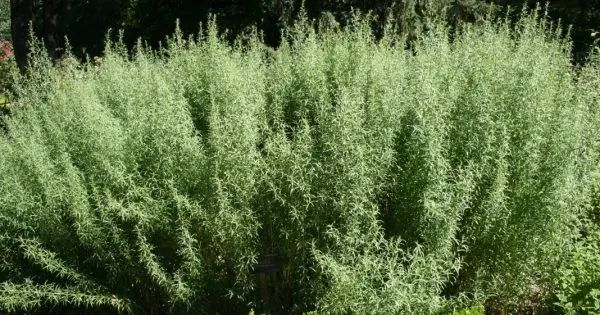
Care and growing
Crop care includes standard activities, consisting of watering, weed removal and timely top dressing. As a perennial plant, tarragon only develops in the first year of life, and blooms and bears fruit in the second year, and then, in a cold climate, this can be expected longer. Therefore, the cultivation and care of tarragon to a certain extent depends on this feature:
- watering is carried out systematically, but as needed (you need to make sure that the soil does not dry out and is not excessively wet) – in the first year, while the plants are being formed, watering should be done often, an adult plant should be watered 3-5 times / season and only in dry periods;
- cuttings require more careful care: until the roots grow, the soil should always be moist, the shelter should be periodically removed for ventilation, and cuttings that do not develop should also be removed;
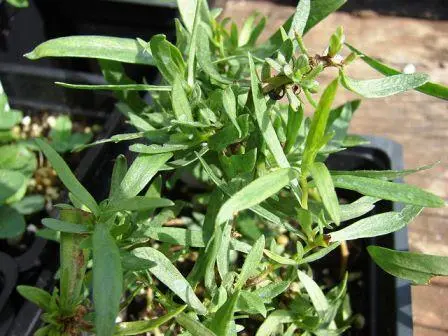
- removal of weeds is carried out as necessary simultaneously with the loosening of row spacings;
- if the cultivation of tarragon was originally carried out in the garden, then with the appearance of the first 2 leaves, the seedlings must be thinned out so that the distance between them is at least 10 cm;
- it is impossible to grow lush greenery with excellent taste qualities without organic and mineral dressings – fertilizers are applied starting from the second year: in early spring, mineral mixtures with a minimum nitrogen content are introduced, since this element negatively affects the taste of the grass, after each cutting, the bushes are fed with liquid mullein, droppings or fermented grass (1:10);
- it will be easier to grow young plants if they are tied to small supports, since the stems of the seedlings are very thin and break easily;
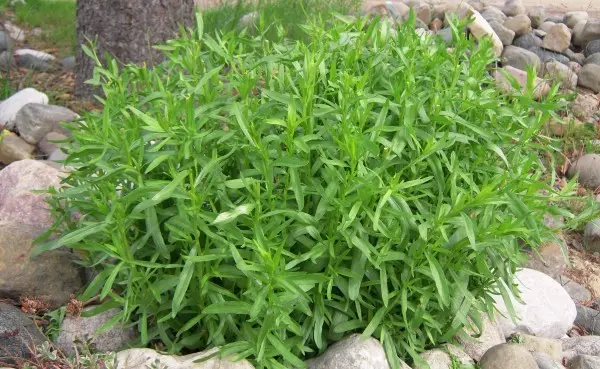
- the last cutting of greens is carried out in August – it is not recommended to collect tarragon later, as this deprives the plant of the opportunity to accumulate the nutrients necessary for wintering;
- in September, when the leaves turn yellow and dry, the bush is cut at a level of 6-10 cm from the soil surface, a layer of compost is placed on the remaining stumps, humus is scattered around, and all this is covered with any organic mulch: sawdust, fallen needles, can be dry foliage;
- some types of tarragon grow with the help of underground shoots – so that the plants do not move to the next bed, they must be protected with pieces of slate buried in the ground.
Collection and storage
Like all herbs, tarragon must be harvested before flowering. It is not recommended to cut the plant in the first year, as it is only being formed, and the grass must be fully grown to harvest. In addition, young greens have a less intense aroma and taste.
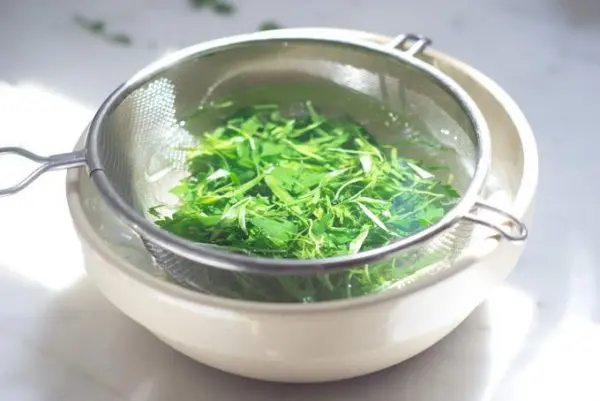
Starting from the second year, young shoots 20-30 cm long can be cut off. Tarragon grows quickly – 3-4 crops of young greenery can be harvested per season. The woody branches are also used as a flavoring agent in canning and pickling vegetables.
To prepare tarragon for future use, they resort to drying or, less often, freezing. The difficulty with freezing is that it is not advisable to cut the greens – the leaves and young twigs must be separated from the stems by hand, washed, dried, put in a bag and placed in a freezer. The grass dries quickly and easily, as its shoots contain only 5% moisture. For drying, tarragon is collected in small bundles, which are hung by the ends under a canopy in a dry place. When the bundles are completely dry, the leaves are separated from the stems by hand, crushed, and placed in jars for further storage. Dry tarragon can be stored in hermetically sealed containers for 1-2 years.
Video “About cultivation and care”
Informative video about the tarragon plant and its cultivation.
Author: Svetlana Galitsina
Loading…









